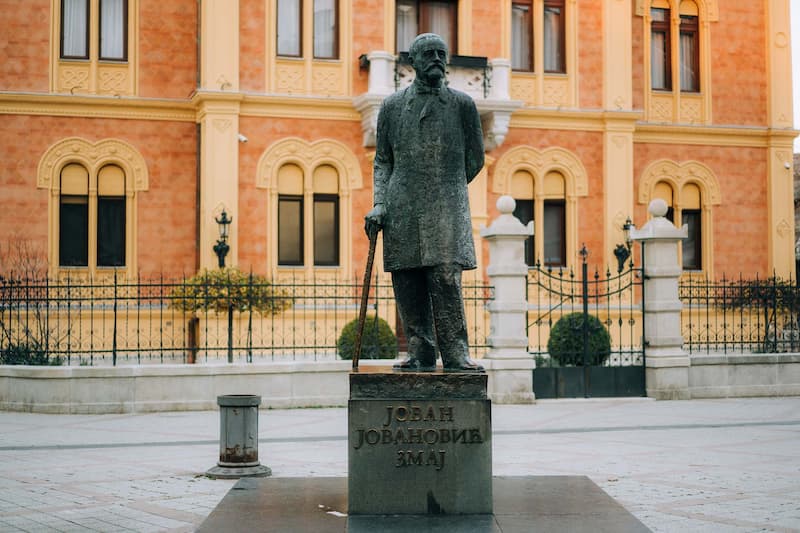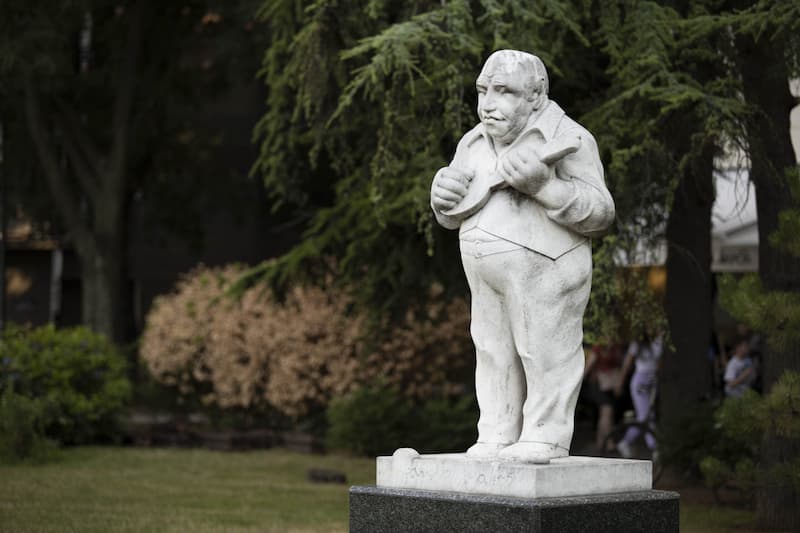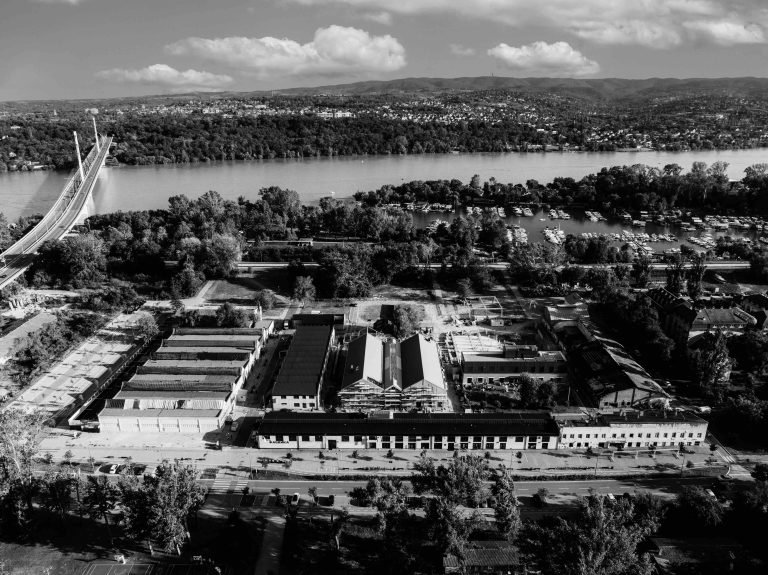The finale of The Danube Sea, the current programme arch of the European Capital of Culture, will be marked by an unusual performance by over 200 top performers and orchestras from 11 countries on the main Novi Sad square. Don’t miss the evening of the authentic sound of the tamburitza and the unique Tamburitza Philharmonic, which will perform on 21 August at Liberty Square, starting at 9 p.m. Tamburitza will bring together numerous virtuosos in this musical spectacle, and for the first time in the European Capital of Culture, a unique performance of the world’s representative team of tamburitza players will take place, which has never before happened on this scale.
Tamburitza will be a bridge that will unite both lovers of this art and different genres, we will communicate in the universal language of music, and we strongly recommend that you spend the Sunday evening of 21 August in the centre of the European Capital of Culture. In response to this event, which is supported by the Austrian Cultural Forum, we will look back on the history of the tradition of tamburitza music in this region, the famous Vojvodina musicians and songs that are still played in taverns today, but also an instrument that dates back to the oldest civilisation
Tamburitza as a Reflection of Vojvodina’s Soul
They say that tamburitza music reflects the soul of the Pannonian Plain, something that defines Vojvodina’s cultural identity and that here tamburitza is listened to with the ears and heard with the heart. Tamburitza is equally well played and felt by Serbs, Hungarians, Croats, Roma, Bunjevci, Šokci, Slovaks, Ruthenians… In order to institutionally protect the tamburitza tradition in Vojvodina, tamburitza players are registered in the National Register of Intangible Cultural Heritage of Serbia.
The tamburitza is a stringed musical instrument with 4 to 8 strings. Due to the high technical capabilities it possesses, everything from traditional, classical, film, to contemporary music can be played on the tamburitza. Therefore, the tamburitza is also receptive to younger generations, and tamburitza music festivals are extremely popular. The tradition of tamburitza music in Vojvodina dates back to the first half of the 19th century, and the place in Vojvodina with the most tamburitza players per capita is the village of Deronje, near Odžaci, where the First International Tamburitza Fest was held.
Before the appearance of the tamburitza, the festivities were accompanied by bagpipes and fiddles. The accepted opinion is that the Turks brought the tamburitza to the Pannonian area. However, the Byzantine historian Theophylact Simocatta wrote that the ancient Slavs knew about the tamburitza long before the arrival of the Turks to Anatolia. Be that as it may, the first tamburitza, the so-called samica or, as it was also called dangubica, razbibriga, or tikvara, was mentioned in Vojvodina as early as 1551 by the travel writer Nikolaj, who accompanied the French consul on his way to Turkey. The oldest preserved tamburitza dates back to 1847 and is owned by Paja Kolarić from Osijek. Today in Vojvodina, we distinguish the following types of tamburitza: bisernica or prim (the smallest tamburitza instrument), brač or basprim, čelo, bugarija, or contra, standing čelo and tamburitza bas-begeš-berde (the largest tamburitza instrument).
Novi Sad: the Birthplace of Tamburitza Troupes
At the end of the 19th and beginning of the 20th century, most places in Vojvodina had their own tamburitza orchestra, but Novi Sad certainly had the most of them. The fact that there was a considerable number of taverns and inns in this town also contributed to the creation of a cheerful mood. First-class tamburitza troupes could be heard in numerous taverns. Large Novi Sad hotels, such as the Grand Hotel Majer, had their own taverns where Hungarian Roma tamburitza orchestras often played Hungarian songs or various compositions from operas and operettas.

Taverns Where Most of the Carousing Took Place
The loudest celebrations in Novi Sad happened where the Serbian tamburitza troupes played and where the Serbian audience gathered. These tamburitza players not only played but also sang. The best tamburitza players usually played in the taverns Bela lađa, Kod kamile, Kod Slavnića, Kod tri krune, Kod Plevna… There were always cheerful guests in those places and often during the week the cheerful mood turned into real carousing, especially when someone felt like buying rounds and ‘blowing up the roof’. Night police patrols were constantly patrolling the streets, especially around these taverns, because nightly disturbances, either by young gentlemen, trade apprentices, or wealthy farm boys, who also engaged in physical confrontations, were quite common. At that time, women did not go to taverns at all at night. Only rare cases are remembered when some energetic woman dared to go in there before dawn to look for her lost husband and lead him home.
Tamburitza Serenades
The tamburitza players sang special songs under the girl’s windows, such as Ti već spavaš zlato moje, Tija noći, moje sunce spava, Milkina kuća na kraju, Sunce jarko, ti ne sijaš jednako, and others. If, on the other hand, the serenade ended with the song Odbi se biser grana, i.e., the matchmaking song, it already had its own special meaning, that the serenader wanted to propose to the girl. There were also the opposite cases when the rejected suitor came to give a farewell serenade, and ‘cat music’ was played for the girls who would reject the suitors. This involved meowing and rattling under her window to wake up the whole neighbourhood and embarrass her.
Money for Drinks and Tamburitza is Never Spare
The tamburitza players from Vojvodina were real virtuosos on their instruments and, playing in taverns, they brought a real carousing mood and a great time with drinking and songs. So, Jovan Jovanović Zmaj, writing about the benefits of saving in his satirical newspaper Starmali from 1880, said: ‘You can save money on a suit, on an apartment, on food – but it’s a little more difficult to save it on drinking, especially if the tamburitza play.’

Famous tamburitza songs, in addition to Svatovac and Bećarac, were: Što se bore misli moje, Ja sam momak siromah, Vesela je Srbadija, Đaurko mila, Triput ti čuknam, Đuvegije gde ste da ste, Tuga me mori, Da su meni oči tvoje, and many others. Tamburitza orchestras from Vojvodina conveyed our songs to the world, all the way to Paris, Berlin, and Vienna, to America, where the recording companies ‘Columbia’, ‘Diadal Records’, and others recorded gramophone records with local tamburitza music.
One of Eight Tamburitza Players from Petrovaradin
The most famous Novi Sad musician of Roma origin was Janika Balaž, to whom a statue was erected near the Varadinski Bridge, and to whom the song Osam tamburaša s Petrovaradina (Eight Tamburitza Players from Petrovaradin) was dedicated. He spent almost his entire career as a member of the great Radio Novi Sad Tamburitza Orchestra and often collaborated with Zvonko Bogdan. Back in 1972, one of the greatest violinists of the 20th century, David Oistrakh, visited Novi Sad and found himself in a tavern on the Petrovaradin Fortress. Hearing Janika play, he was amazed and stood up in front of the whole tavern and acknowledged him, saying that he is a greater virtuoso than himself.

Other creators of tamburitza music from Vojvodina who stood out with their songs are Marko Nešić (who wrote more than 200 compositions, such as Đuvegije gde ste da ste, Donesi vina krčmarice, and Biće skoro propast sveta), then Vasa Jovanović, Stevan Bačić Trnda, Joca Maksimović Čonka, Laza and Toša Relić, Šandor Šanjika Grebenar…
The lyrics of one of Zvonko Bogdan‘s songs say: ‘There are fewer and fewer good tamburitza players, carriages, girls, and farms’, but this is not the case today, because Novi Sad is the capital of tamburitza music as well as the European capital of Culture.
Author: Ljiljana Dragosavljević Savin, MSc, historian
Photo: Jelena Ivanović, Vladimir Veličković







